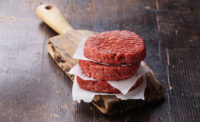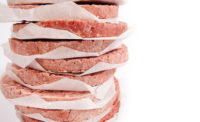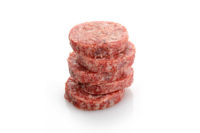Last year, a new line of premium pre-sliced sub meats from Land O’Frost inspired the company’s switch to an automatic, high-speed interleaver, stacker and card dispenser.
The pre-sliced deli-meat producer wanted to group its sub meats in sandwich-size portions by sanitary wax paper, with a high-volume, sanitary solution.
“We made our product change based on consumer insights,” says Peter Burke, senior vice president of operations at Land O’Frost. “We learned consumers were using more product than we had divided in between papers. We adjusted the amount of meat in between each paper based on the voice of our consumer.”
In addition, the new system runs more efficiently and at a higher speed, which allows Land O’Frost to increase its capacity while also maintaining high food-quality standards.
“We’re also always identifying ways to be more sustainable in our processes, so our new system uses less paper and is more environmentally friendly,” Burke says.
Controlling yields, weights and center lining are critical, and the deli company has invested in solutions such as slicing technology and checkweighers to help address those challenges, says Burke.
“Additionally, food safety is always a top priority for our company, and it definitely comes into play with interleaving and stacking procedures,” Burke says. “We’ve taken several steps to ensure that we’re always meeting our high food-safety and quality standards, including specifically designing equipment that has the ability to maximize sanitation and adding best-in-class labelers and customized conveyors in pack-off areas.”
Just as consumers inspired Land O’Frost to renovate its interleaving and stacking system, they are driving new product decisions.
“Sustainability and recyclability are becoming more important,” Burke says. “In addition to new technology, which will continue to evolve and play an important role in the future, we expect costs to lower for investment in unit loading, case packing and pallet assembly.”
Certainly, automating interleaving and stacking procedures guarantees a faster, more efficient and quality product. Programming a robot to do it, however, is a bit more challenging.
“Food and beverages are a difficult application for robotics,” says Bob Doyle, vice president of marketing, communications and advocacy at the Association for Advancing Automation, based in Ann Arbor, Mich. “New technology is changing this. But if you think about a robot putting a small piece of wax paper between two hamburgers, that is still a difficult application.”
The general public thinks robots can easily handle every manual labor job, but the food industry still poses challenges.
“But we’re seeing those challenges starting to get solved because soft grippers on a robot, for example, can pick up a hamburger patty and put it on wax paper, even pick up paper,” says Doyle. “We’re learning how to best do applications like gripping and vision.”
There are companies already specializing in developing robots that can grip food while still meeting food-safety requirements, Doyle says. The cost for food processors? Coming down with a higher, faster return on investment.
“Now, the human factor is a bigger deal — finding the right people for the best jobs and preventing high turnover,” says Doyle.
Our robot overlords haven’t taken over just yet. But they could be useful to processors in a time of low unemployment when it’s hard to find qualified candidates for not-so-great jobs — or so productive employees can be moved to more pleasant jobs.
“As companies see the benefits of their return on investment and the tech works faster and easier, we will see more automation in interleaving and stacking,” Doyle says. NP





Report Abusive Comment